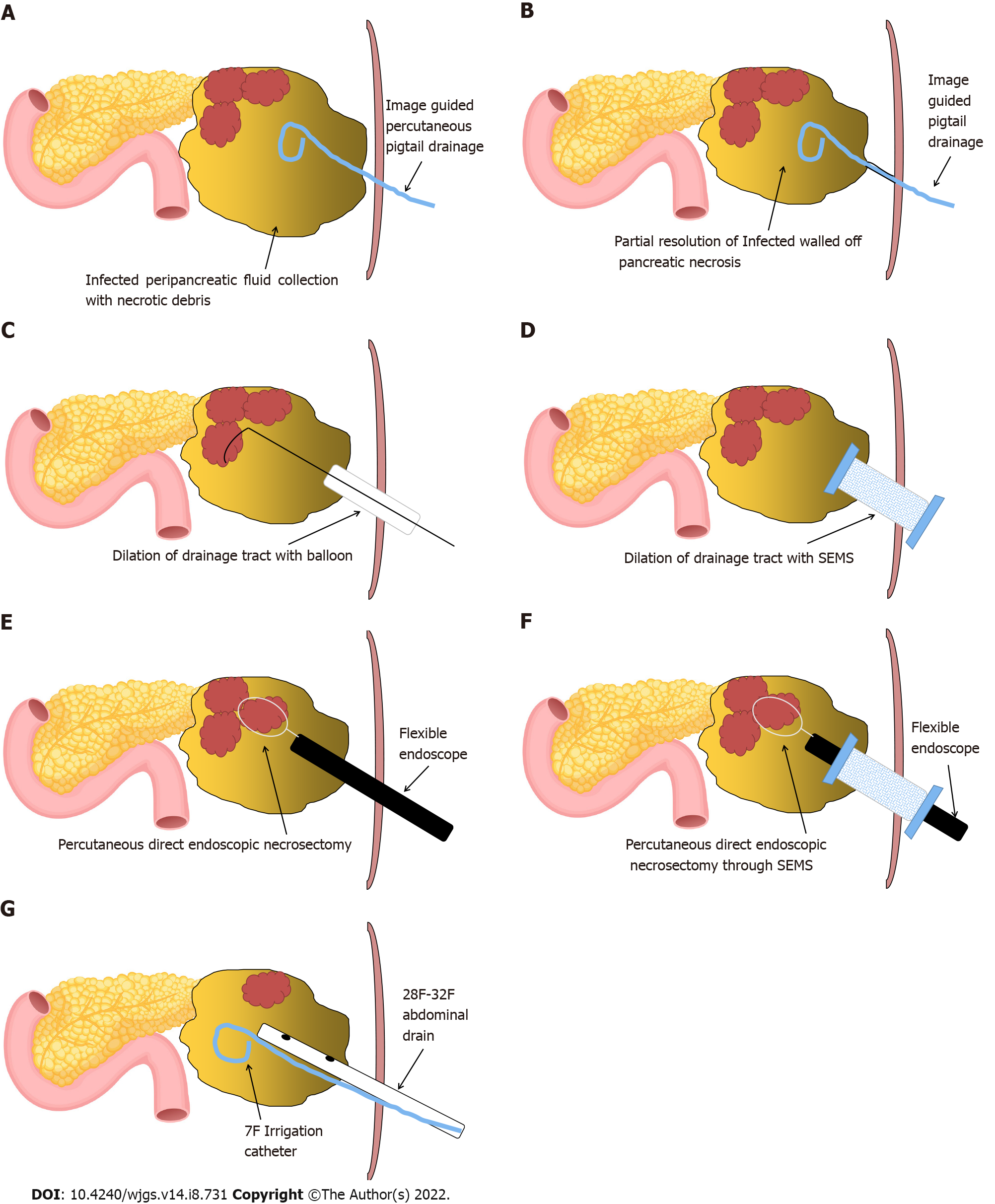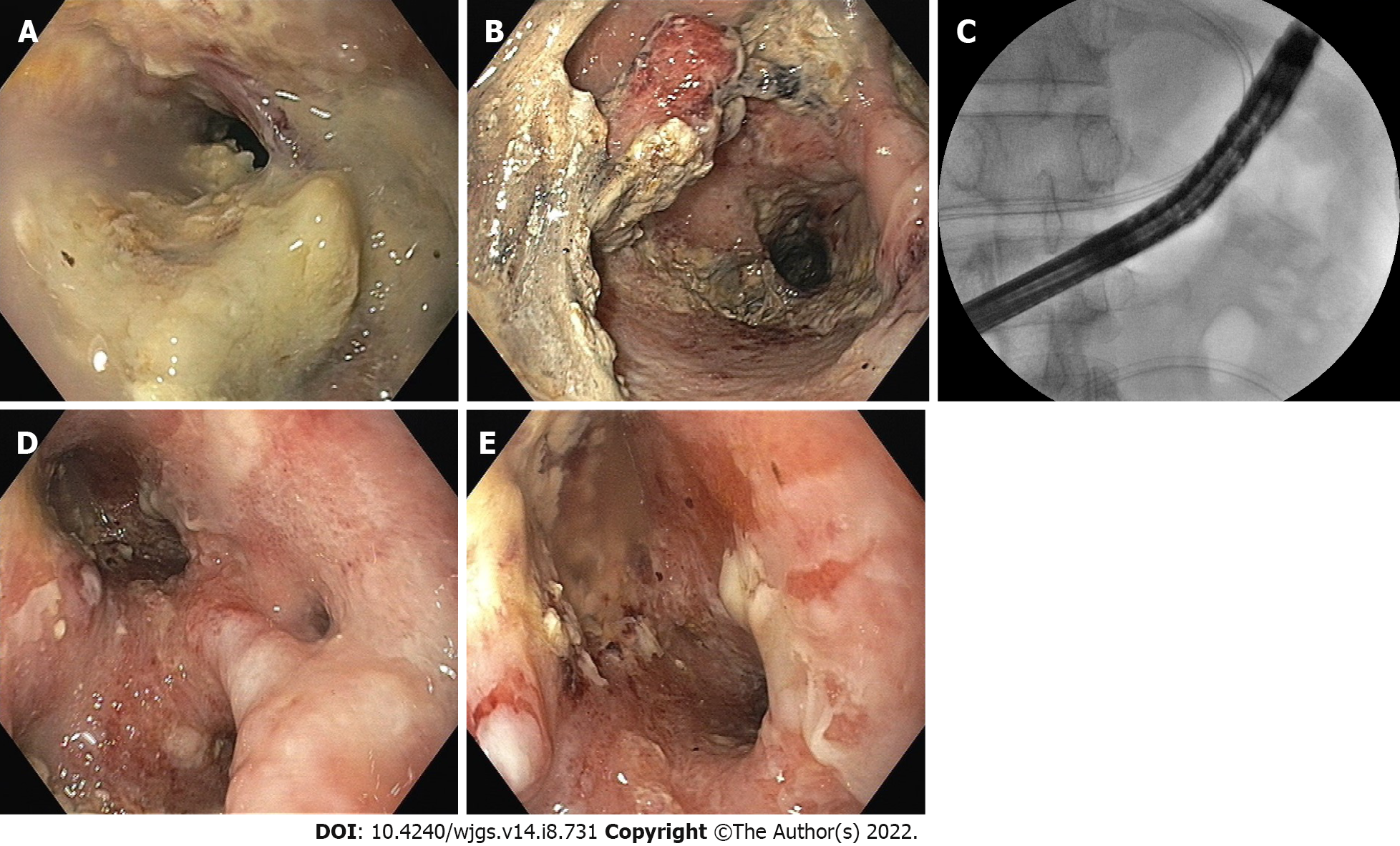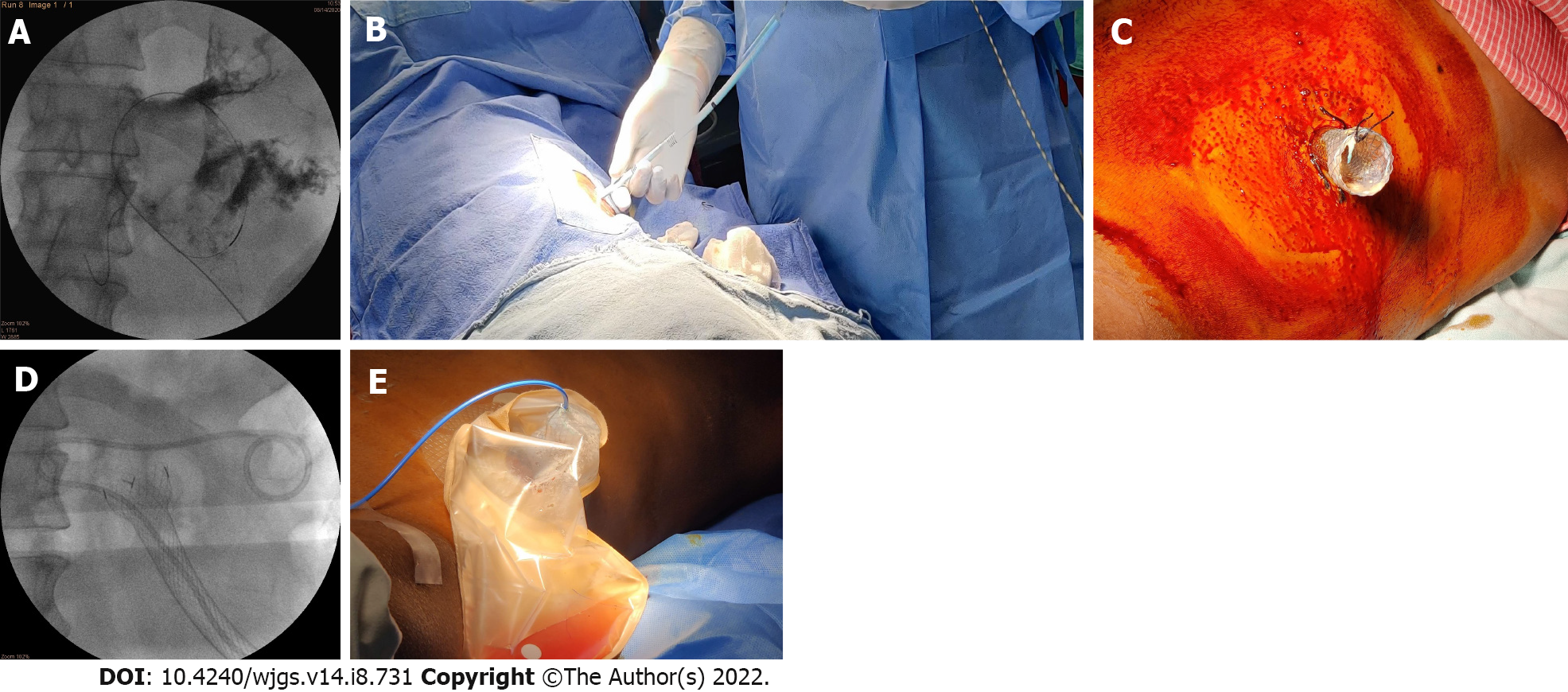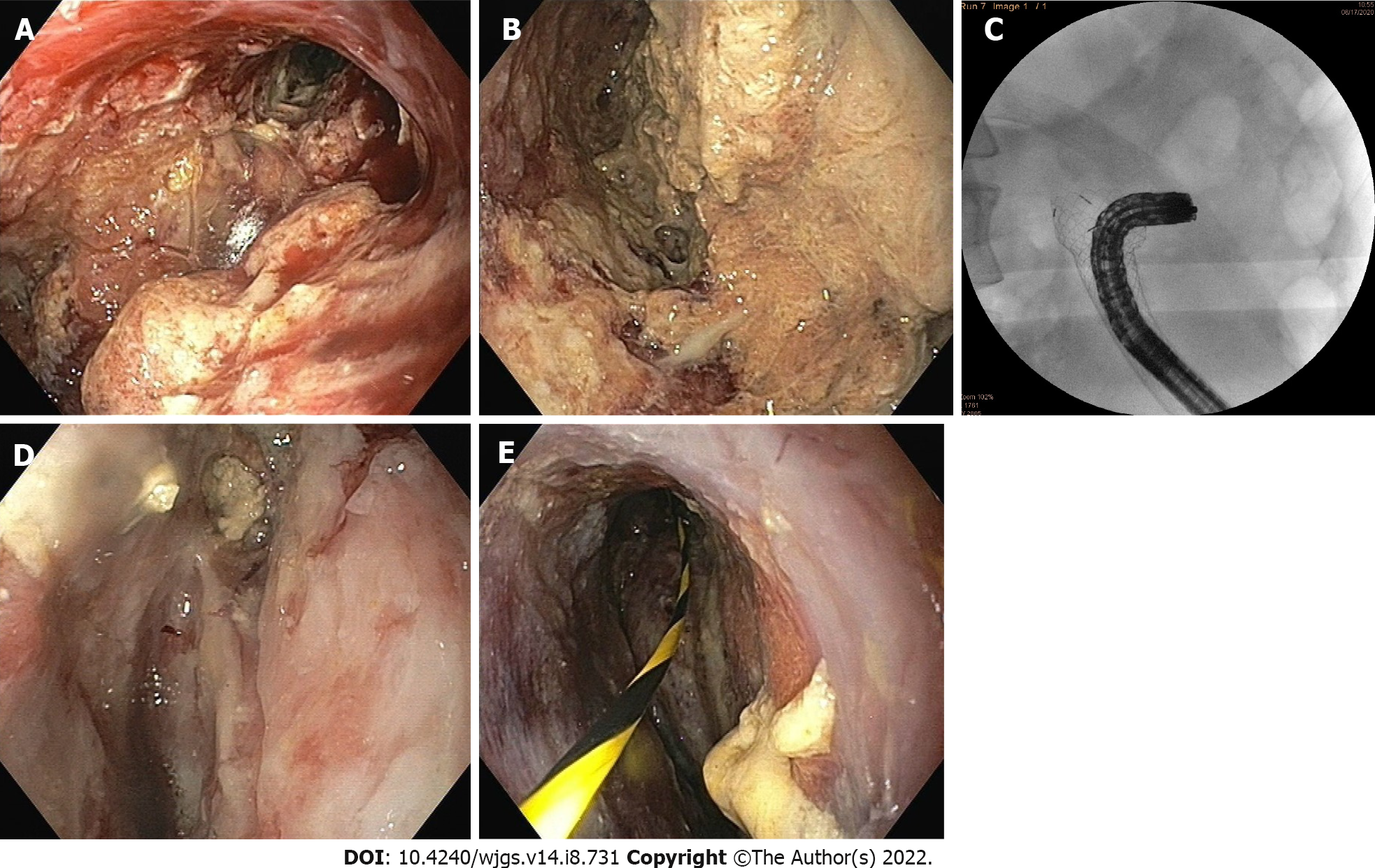Copyright
©The Author(s) 2022.
World J Gastrointest Surg. Aug 27, 2022; 14(8): 731-742
Published online Aug 27, 2022. doi: 10.4240/wjgs.v14.i8.731
Published online Aug 27, 2022. doi: 10.4240/wjgs.v14.i8.731
Figure 1 Schematic representation of steps involved in percutaneous direct endoscopic necrosectomy.
A: Image-guided pigtail drainage of infected pancreatic/peripancreatic collection; B: Partial resolution of infected walled off pancreatic necrosis (WOPN) with maturation of drainage tract between the skin and WOPN (usually 7-10 d approximately); C and D: Drainage tract dilation with (C) wire-guided controlled radial expansion balloon or (D) an esophageal fully covered self-expandable metal stent (SEMS); E and F: Percutaneous direct endoscopic necrosectomy with flexible endoscope through (E) the dilated tract or (F) a fully covered SEMS; G: Placement of large bore abdominal drain and irrigation catheter for drainage and irrigation of WOPN cavity, respectively.
Figure 2 Abdominal contrast enhanced computerized tomography.
A and B: Large, irregular infected pancreatic/peripancreatic collection (PFC) (arrows) in upper abdomen in coronal and transverse sections; C: Partial resolution of PFC (arrow) with a 14 F pigtail (arrow head) in situ; D-F: A 26 F drain (arrows) and a 7 F pigtail irrigation catheter (red arrow head) in walled off pancreatic necrosis (WOPN), and nasojejunal tube (white arrow heads); G and H: A 32 F drain (arrow) in situ with complete resolution of WOPN after (G) 2 wk and (H) 4 wk of percutaneous direct endoscopic necrosectomy.
Figure 3 Percutaneous direct endoscopic necrosectomy.
A and B: Infected necrotic debris in walled off pancreatic necrosis (WOPN); C: A flexible upper gastrointestinal scope deep within the WOPN cavity for percutaneous direct endoscopic necrosectomy (PDEN); D and E: Clean WOPN cavity after PDEN.
Figure 4 Abdominal contrast enhanced computerized tomography.
A and B: Residual walled off pancreatic necrosis (WOPN) (arrow heads) with post open necrosectomy drain (arrows) in situ; C: An esophageal fully covered self-expandable stent (red arrow) in WOPN with a 7 F irrigation catheter (yellow arrow). The asterisk (*) indicates injected contrast within WOPN cavity; D: Complete resolution of WOPN with the drain in situ (arrow).
Figure 5 Drainage tract dilation and placement of a self-expandable metal stent.
A: Coiling of the guide-wire along with contrast in walled off pancreatic necrosis (WOPN); B: Dilation of the drainage tract with Amplatz dilators over the guide-wire; C: An esophageal fully covered self- expandable metal stent (SEMS) secured to the skin with sutures; D: A 7 F irrigation catheter in WOPN through a fully covered SEMS; E: A stoma bag secured in place over fully covered SEMS with a 7 F irrigation catheter in place.
Figure 6 Percutaneous direct endoscopic necrosectomy.
A and B: Infected necrotic debris in walled off pancreatic necrosis (WOPN); C: A flexible endoscope through a fully covered self-expandable metal stent with ability to angulate to reach deep within the cavity; D and E: Clean WOPN cavity after percutaneous direct endoscopic necrosectomy.
- Citation: Vyawahare MA, Gulghane S, Titarmare R, Bawankar T, Mudaliar P, Naikwade R, Timane JM. Percutaneous direct endoscopic pancreatic necrosectomy. World J Gastrointest Surg 2022; 14(8): 731-742
- URL: https://www.wjgnet.com/1948-9366/full/v14/i8/731.htm
- DOI: https://dx.doi.org/10.4240/wjgs.v14.i8.731


















